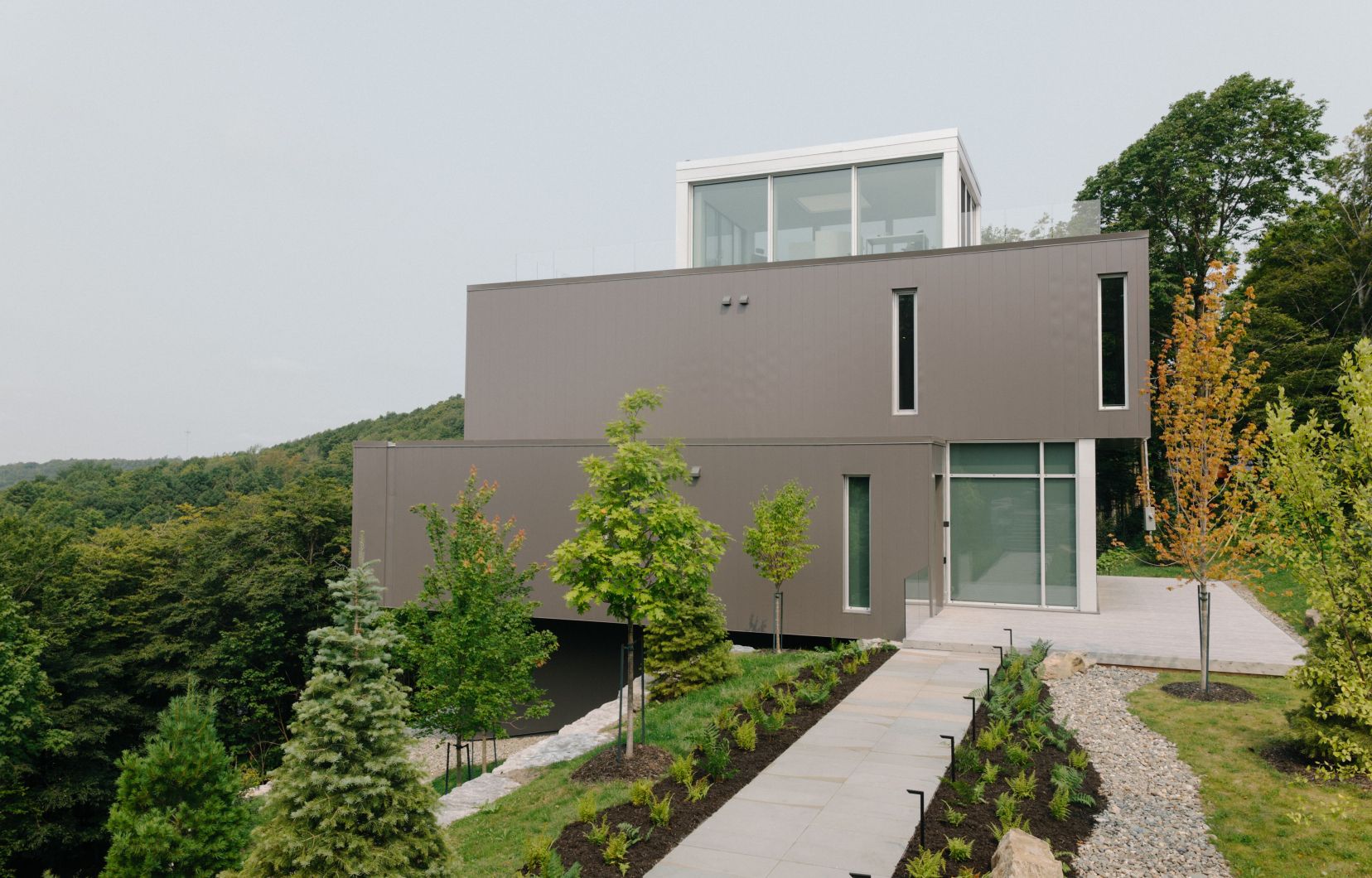Essential to the art market, companies do not just collect. They also exhibit. Three of these collections have recently found new showcases. As an urban tour, in the form of a museum or around a coffee, the modes of exploration vary. Last of three texts.
The curved climb surrounded by vegetation does not deceive: the destination is in a mountainous area. At the top, one would say, so steep is the road. The place is aptly called L’Observatoire. From up there, the view is magnificent. On the program: Mount Shefford, Bromont in the distance and, the reason for the building’s existence, a vast art collection carefully displayed.
The Observatory is the latest project by Quebec companies that are creating a place to make their works accessible to as many people as possible. It brings together, like a museum, a sample of the collection of Giverny Capital, a Montreal portfolio management firm. Its president and founder, François Rochon, has been dreaming of it since he started his business.
“He has been collecting art for thirty years and, from the beginning, he wanted these works to be brought together under one roof. Here it is, now it exists,” says an enthusiastic Anne Roger, head of the Giverny Foundation for Contemporary Art, from where she manages the Giverny Capital collection. The name of the company betrays the financier’s passion. It was while visiting the gardens of Giverny, where Claude Monet had established his residence, that François Rochon got the art bug—and a site, with a pond and a small bridge.
His company has 800 works, a number that Anne Roger, in her position since only 2022, explains logically: “He decided to devote 50% of his profits to a collection. That’s huge, 50%! As Giverny Capital’s profits increase over the years, the budget [d’acquisition] also increases. That’s why we have 800 works.”
Of the lot, 55 landed at L’Observatoire, while others, which remained in Montreal, are in the company’s offices or are exhibited in a location on Crémazie Boulevard. With a surface area of 5,000 square feet, L’Observatoire was built like a two-story house by architect Pierre Thibault.
In a resolution dated July 6, 2021 that we consulted, the municipality of the county of Shefford authorizes “the addition of the use “Private exhibition room” to the single-family residential building”. Conditions are set in order to mark out its use and preserve the residential character of the neighborhood.
Although it cannot be visited like a museum—you have to reserve your place on a one-hour guided tour—the Observatory applies the standards. Anne Roger leads the tours. Having worked in the art market, notably at the Antoine Ertaskiran gallery, she has the expertise required to comment on and take care of each of the works exhibited, Look Up (2008), mural in 49 colored paintings by Wanda Koop, in Atrabiliary (1992), a small installation embedded in the wall through which Doris Salcedo pays homage to anonymous victims of violence.
” [Nous avons] museum conditions in terms of humidity and temperature,” she said, closing a blind on this sunny June day. “We are really careful. It is very important that the works are well protected.”
Art and landscape on the same level
The flagship work, the one which, according to Anne Roger, “was in Pierre Thibault’s model [et qui] dictated, guided the proportions” of the architecture, is an installation in a thousand and one stones by Richard Long, an English sculptor of the land art movement. Arranged on the ground in a perfect circle, Valle Pellice Stone Circle (1989) offers itself as a link between culture and nature, the handmade and the already there. Its location, in front of a large window, encourages contemplation.
“Being in contact with nature is a whole. We observe and appreciate works of art as we appreciate a landscape,” says the spokesperson for Giverny Capital. “We take a break, we are in a parenthesis, in a bubble, and we look. We let ourselves be carried away by the place, by the works.”
Worthy of a long-term exhibition—two years or more—the presentation is based on thematic or formal links between works of all kinds. Sometimes, the rooms are well-stocked—alongside Long, paintings by Guy Pellerin, Manuel Mathieu, Julia Dault, David Simpson—other times, they are less so. The kinetic projection Round Rainbow (2005) by Olafur Eliasson is given its own space, which is essential to achieve the illusion of astral phenomenon created by the movement of rudimentary objects.
The video room set up, with cutting-edge equipment, allows the broadcast, alternately, on different screens and in more than one loudspeaker, of powerful works by Shirin Neshat, William Kentridge and Bill Viola. The latter, a favorite artist of the collection, is present at the Observatory with three works, including the intriguing The Return (2007) and its evanescent character, projected in a separate room. The existential words and the slowness of the images of the Californian videographer, who died last July, find in this corner of the Eastern Townships a very appropriate sanctuary.
“There are many works about life, death, passage… Loaded works, that’s what François [Rochon] “Looking for it. Being inspired, sometimes overwhelmed. We don’t choose easy works,” acknowledges Anne Roger.
In this house without furniture, which aspires to be a museum without being one, there is room for many emotions, many reflections. The terrace accessible at the very top offers the highest point: the panorama of a region rich in mountains.
And that’s not all, because a sculpture garden, currently being installed during the summer, will soon complete the program. With a pond and a small bridge somewhere around.
